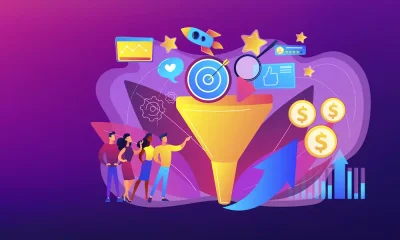Marketing
5 Reasons Your Pinterest Marketing Is Not Working

Mastering social media to boost traffic to your website is a learned skill. While many marketers feel confident they’re making progress with Facebook, Twitter and LinkedIn for business, Pinterest is often left out of the mix due to a lack of knowledge of the platform and how it too can be part of the marketing mix.
Pinterest can be a great way to boost your website traffic and engagement, but if your Pinterest marketing efforts are not bringing good conversions, then maybe you need to learn more about the platform and change your strategy.
Are you making these mistakes on Pinterest?
1. Not Pinning the Right Images
Pinterest is all about sharing a visually appealing content. Where users go wrong is with what they’re sharing. The images are not appealing to their audience.
There’s a lot of activity on Pinterest, and you’ll know from your own activity that people scroll through thousands of pins and only stop on one they find interesting. Therefore your goal is to select images carefully, so your followers find your pin catchy and click on it.
To make sure that your link is clicked, the image should be of high quality and well optimized. If the pin links to an article, then add the article title on the pin so that people know what to expect when they click on the link.
2. Providing a Bad Quality Link
Well done on growing followers for your Pinterest boards, now you to make sure every pin links to a landing that has high-quality content. If you continuously add links to poor quality content, your audience will lose interest in your pins.
Keep at the forefront of your mind, your followers time is as precious as your own so don’t just pin anything, make sure it’s relevant and will pique their attention.
3. Following Someone Because They Follow You
Do not get trapped into the follow-for-follow rabbit hole. If someone follows you, do not blindly follow them back.
Browse through their pins and see if their boards interest you. If not, do not get pressurized to follow them back, they follow you just because they are interested in your pins.
4. Not Including Searchable Terms in the Pin Description
When you are pinning something, add related searchable keyword terms so your non-followers will be able to find your pins only by searching keyword terms.
An example is: say you share an image of a Chocolate Mud Cake, do not write in the description- “Yummy! Dying to try them!” as no one will search for these keywords instead add the term- “Chocolate Mud Cake Recipe“, and you will find many non-followers landing on your recipe page.
Similarly, name your boards relevantly and do not use absurd terms which people may never search for.
Relevance is the key to be searchable on Pinterest.
5. Re-pinning Without Verifying the Legitimacy of the Link
Pinterest is not just about sharing your pins but also repinning pins posted by other users. You repin what interests you, so you are genuinely engaged with your followers. Pin up the pins which you really like, and believe the link to the website connects with your followers as it’s informative.
Do not blindly repin just to show fake engagement. There are spammers on Pinterest as well, and it is not cool to post a Pin which, when clicked takes you to a suspicious site. Make sure that you check all the links before repinning.
6. Linking the Pin to a Website Which is Not Accessible Friendly
Pinterest is a social media platform appealing to disabled people, including the visually impaired via its intuitiveness and improved accessibility.
Summary
Avoid the mistakes many users make using Pinterest and follow the recommendations aforementioned to attract followers and channel more visitors to your website. Now that’s sorted focus your attention to your website. All businesses need website traffic, and when they arrive at your site, you need to impress them with fast site load time, smooth navigation with attractive website design.
Website accessibility has never been so critical for reducing bounces, improving audience engagement and conversions. This subject deserves a lot of attention and we have many articles on the topic.






